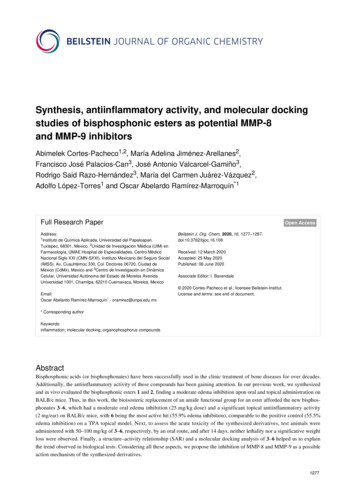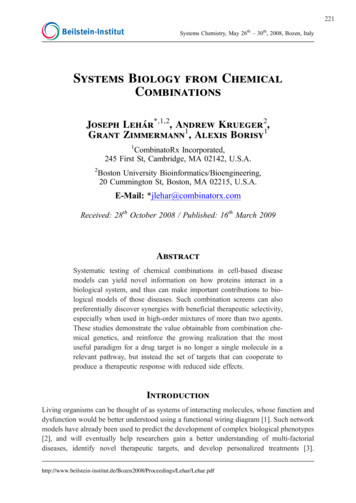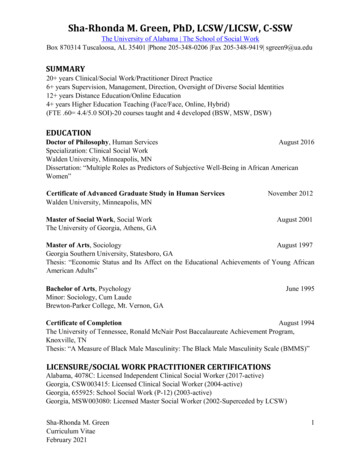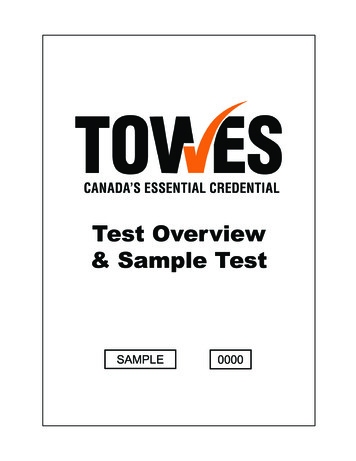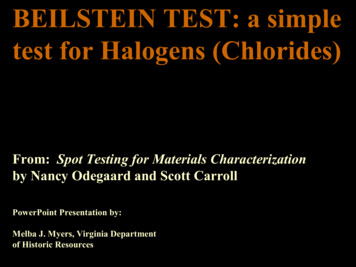
Transcription
BEILSTEIN TEST: a simpletest for Halogens (Chlorides)From: Spot Testing for Materials Characterizationby Nancy Odegaard and Scott CarrollPowerPoint Presentation by:Melba J. Myers, Virginia Departmentof Historic Resources
PLASTIC FILM storage ofarchaeological materialsLabel HoldersPlastic BagsSlide HoldersSlide HoldersPlastic .is Plastic .Isn’t it?is Plastic .
You have heard of testing your packaging materials for pH (ACIDITY)So, here’s another lurking danger and it lurks in PLASTIC.Some remember the days when we went to the grocery store forplastic bags. And now, many years later, perhaps those bags are notdoing so well.But maybe they are OK . . . . . they may LOOK OK.How can we find out if a plastic contains Halogens (Chlorine orCHLORIDES)
Over time, off gassing ofChlorine from the plastic canharm artifacts. The materialitself will also not last as well.
Test for Halogens Using Pyrolysis (BEILSTEIN TEST)Purpose of the Test: Determine the presence ofchlorine/chlorides, especially for materials beingconsidered for long term storage of artifacts.Principle Involved: A material containing bound orionic halogens (chlorine, bromine, iodine) such as saltor polyvinyl chloride (PVC), will react with a copperwire when heated in a flame and produce a brilliant,long lasting green flame.
Insulated Cu WireEQUIPMENT: Copper Wire Source of FlameAlcohol Lamp orCigarette Lighter
PROCEDURE:1) Select a material thatyou know will give you anegative result as acontrolPolyethylene is good
PROCEDURE:2) Heat the wire until itis hot enough to melt theplastic. It is necessary tohold it in the flame for atleast 30 secondsHint: if you are using acigarette lighter, getsomeone else to hold itfor you
PROCEDURE:3) Jab the hot wireinto the sampleplastic and jostle itaround until meltedplastic is transferredto the wireHint: curling theend of the wire intoa small circle or ballprior to heating itwill make itstronger.
PROCEDURE:4) Return wire withtiny blobs of plasticon it back into theflame.DryingPaintingsMoldContamination RoomNegative reaction: no chlorine
PROCEDURE:5) Now try anunknownDryingPaintingsMoldContamination Room
PROCEDURE:6) Heat the wireagain – either pull outa clean wire, or burnoff the plastic fromthe previous oneDryingPaintings7) Test the unknown– make sure you getthe wire hot enoughMoldContamination Room
PROCEDURE:8) Back to theFLAMEVOILLA!Positivereaction:halogenspresent
RESULTS:Positive: A strong green color in the flameindicates the presence of halogens (chloride,bromide, iodide but not fluoride). The flame willburn green for a long period of time if PVCs arepresent.Impurities, such as fingerprints, or surfacetreatments that contain chloride can give a weakgreen flame that disappears quickly.
Purpose of the Test: Determine the presence of chlorine/chlorides, especially for materials being considered for long term storage of artifacts. Test for Halogens Using Pyrolysis (BEILSTEIN TEST) Principle Involved: A material containing bound or ionic halogens (chlorine, bromine, iodine) such as saltFile Size: 1MBPage Count: 15
